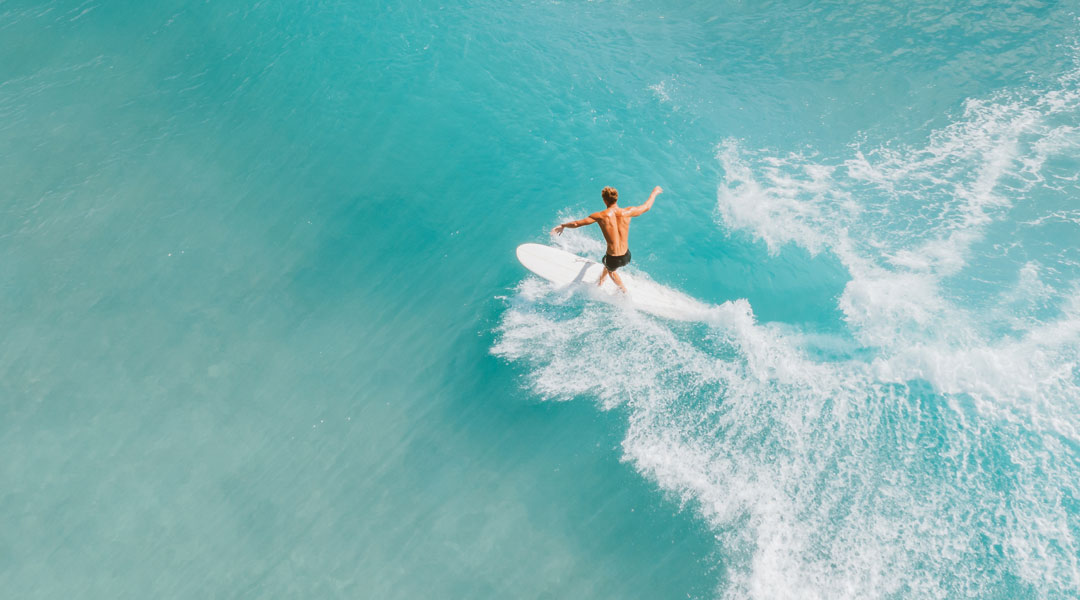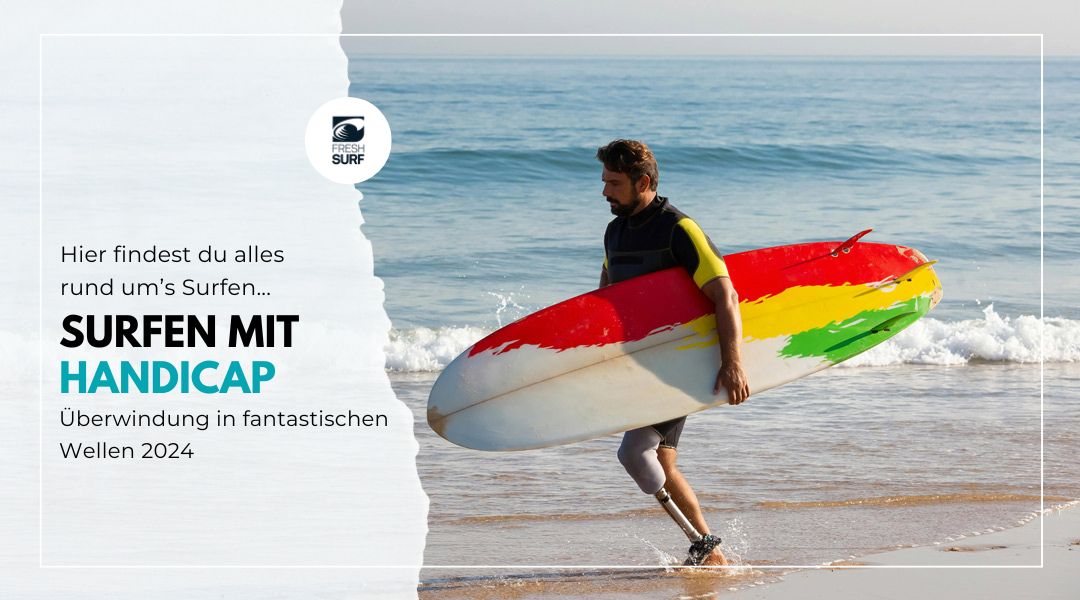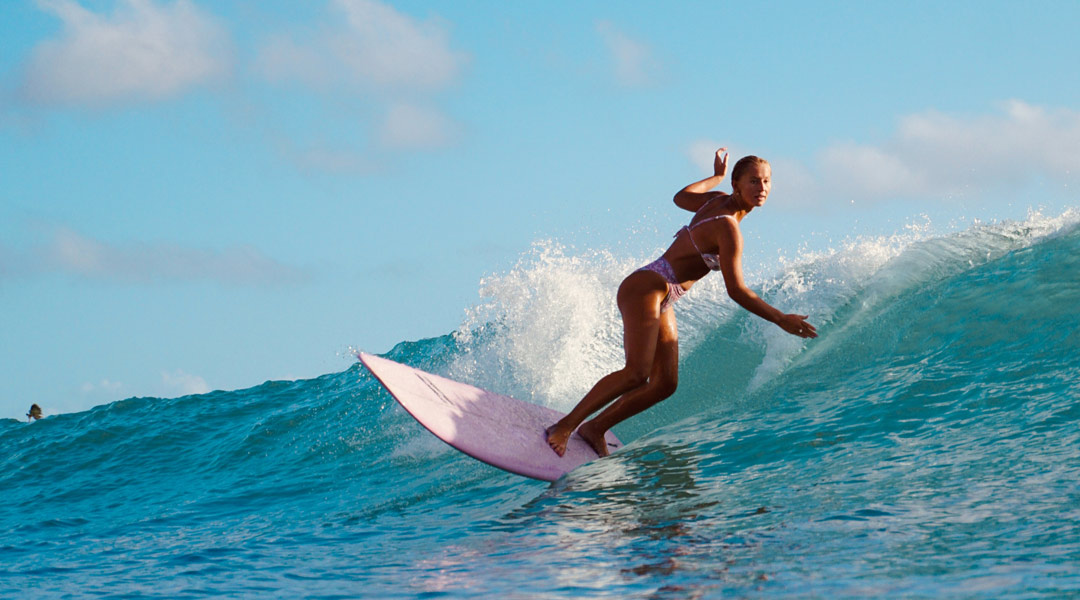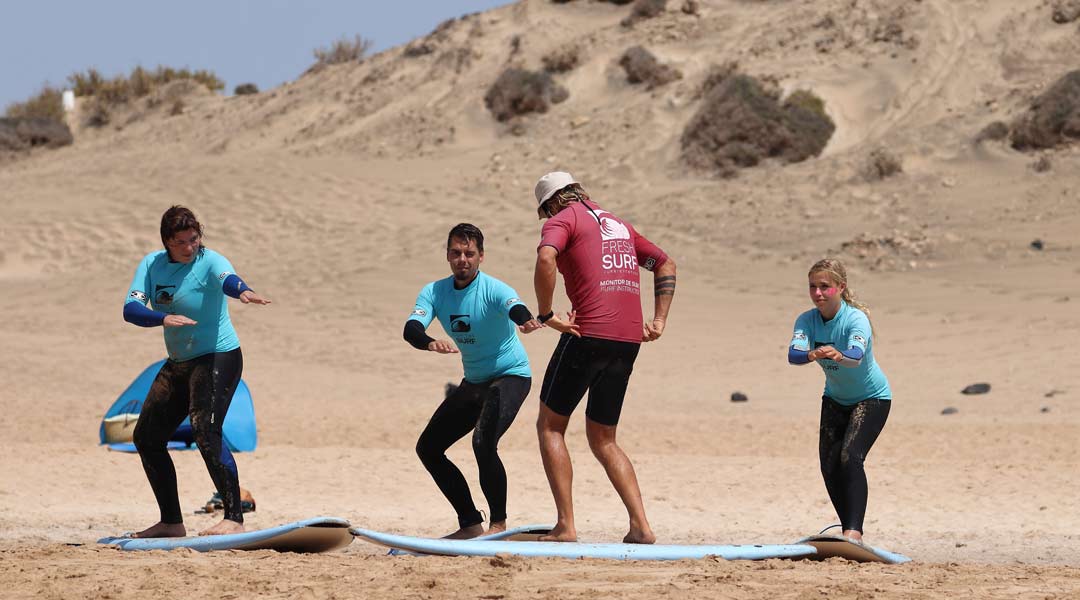
Warm-up: The right warm-up for surfing
We know: Cold starts are dangerous. But too much warm-up can also boycott a good performance in sport. We’ll tell you how to do it right! And we always start our surf courses with a warm-up too.
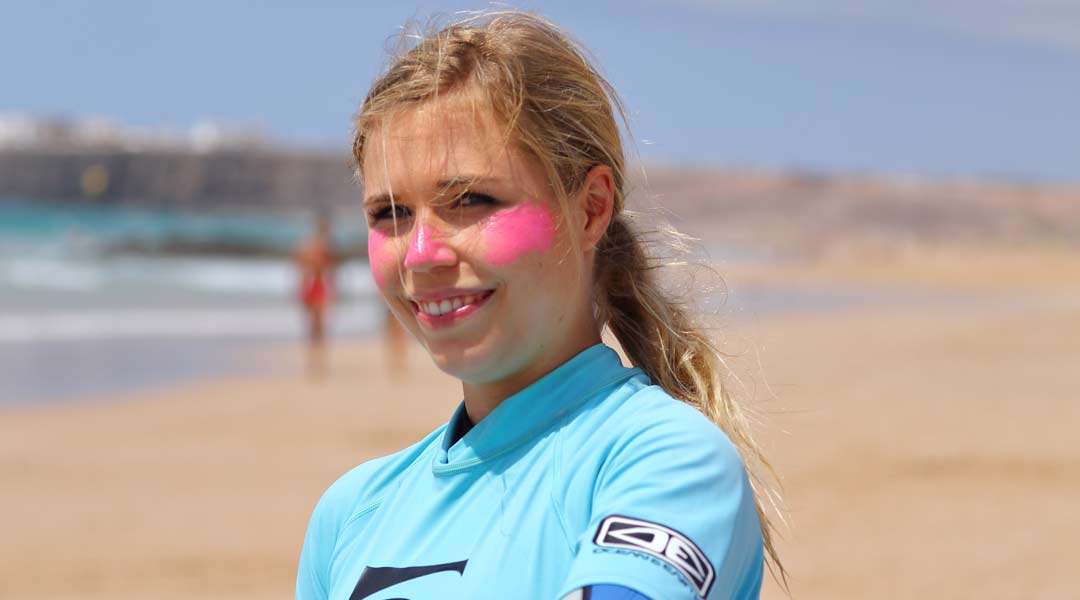
How long should the right warm-up for surfing take?
The exact duration of the warm-up phase cannot be determined across the board. Just like the intensity, it depends on several factors.
If you are active early in the morning, it will take you longer to get up to operating temperature. If you do outdoor activities in the cold season, you should also plan more time for your warm-up than in summer.
The reason: the reduced outside temperature affects the musculoskeletal system.
Other factors that can influence the duration of the warm-up are
- your age: Young athletes generally need to do less warm-up training than older people.
- your fitness level: Better-trained athletes can “treat” themselves to a little more warm-up training than less well-trained athletes. A warm-up that is too intense for an untrained athlete or a new warm-up program for a trained athlete can lead to so much fatigue that their performance deteriorates and the risk of injury increases.
- the sport: Sports with high demands on mobility require a warm-up that is geared more towards stretching. Endurance sports require exercises to increase cardiopulmonary performance. An endurance athlete also needs to warm up for longer than a player, who still has the opportunity to warm up during the competition.
- the mental attitude: high motivation and a strong focus on performance can increase the effect of the warm-up(pre-start state), while a negative attitude can slow it down.
Most important factor: The training goal & the right warm-up for surfing
For a short run in the woods, you naturally need to warm up much more quickly than before an athletic competition. Do you play sports such as football, field hockey or racket sports such as tennis or squash?
Then you need to prepare yourself specifically for the demands of your sport – in other words, warm up in a sport-specific way.
A rule of thumb for recreational and amateur athletes, including amateur surfers is: 10 to 15 minutes is usually enough to increase blood flow to the muscles and supply the body with sufficient oxygen.

Why actually a warm-up for surfing
Warming up properly before surfing affects your body and your mind on several levels.
1. warming up stimulates your blood circulation for surfing
The body now prepares itself for the upcoming activities: Blood depots such as the spleen, liver and digestive tract make blood available to the working organs. The skin is supplied with less blood, while the working muscles are supplied with more. This allows you to surf faster and more agile.
2. the cardiovascular system – the heart beats faster
Blood depots release their reserves: the heart beats faster and pumps more blood throughout the body. This supplies the active muscle mass with more nutrients and oxygen. Metabolic waste products are also better disposed of. And this prevents over-acidification of the muscles. So you are less likely to get sore muscles while surfing.
3. blood pressure rises and the blood flows faster
The difference between systole and diastole is increased by the blood pressure value because the upper value rises. This means that the blood flows faster through the blood vessels, which in turn optimizes the supply to the muscles under strain. Your muscles receive more oxygen and are therefore more efficient when surfing.
4. breathing becomes faster
When preparing for surfing, you breathe in and out faster and deeper: This allows you to meet the growing demand for oxygen and remove the increased carbon dioxide more efficiently. You will get out of breath less quickly while surfing.
5. nervous system
The interaction of nerves and muscles is improved – this reduces the energy requirement, delays signs of fatigue and increases the reaction speed for surfing. You can therefore react more quickly to situations and perhaps surf the wave more effectively.
6. body temperature for surfing
The optimum body temperature for sporting activities is reached by warming up – it is around 38.5 to 39° C. All physiological reactions are most effective under these conditions. You are therefore optimally prepared for surfing.
7. joints lubricate and ligaments become more elastic
The body produces more synovial fluid after a warm-up. As a result, the joint cartilage increases in size and is better able to withstand stress. Tendons and ligaments automatically become more elastic due to the higher body temperature. You therefore have a significantly lower risk of injury when surfing.
8. muscles are more efficient
The muscles are better supplied with blood, more efficient and less susceptible to injuries when surfing (e.g. strains, fiber tears).
9. head, mind, perception & concentration
The warm-up phase improves your ability to concentrate and perceive. You can now react more quickly to special situations, such as surfers or boards suddenly appearing. Possible risks of injury can now be better recognized and therefore avoided.
10. motivation & less nervousness
The right warm-up also increases motivation for the upcoming sporting performance. The right warm-up releases inner tension and cramps and reduces stress and nervousness. This means you can start surfing more motivated and relaxed.
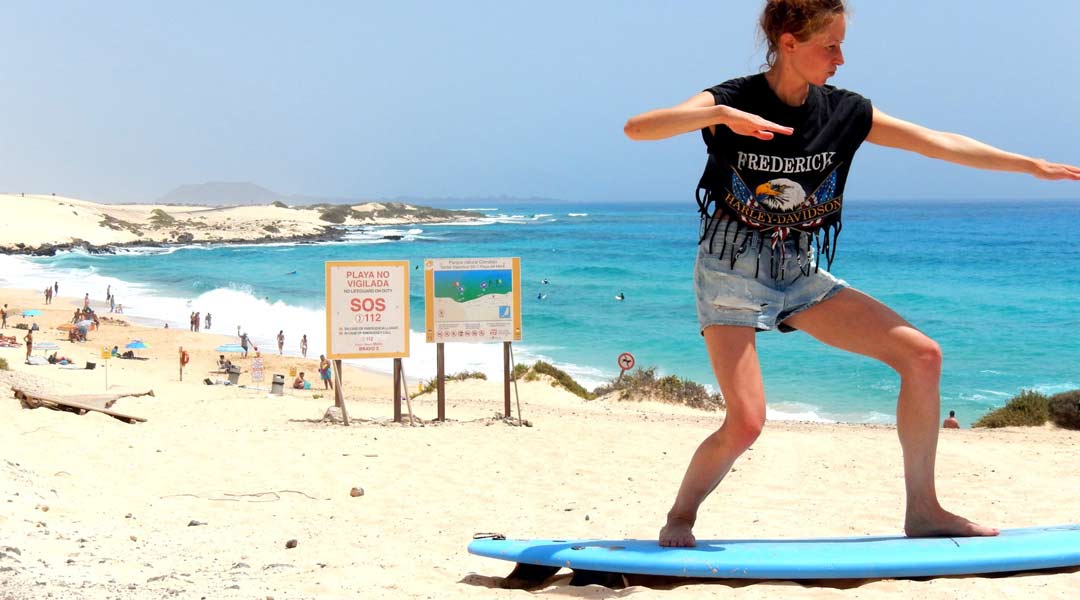
Five rules for a perfect warm-up for surfing:
1. start slowly with the warm-up
Take it easy, because you’re nowhere near operating temperature yet.
Start running on the spot at a moderate pace or you can also jump rope for a few minutes. Don’t push yourself too hard – after all, you’ll need your energy for the workout afterwards! On the beach, jumping jacks on the spot are a great way to start your warm-up for surfing.
2. sport-specific warm-up
The next few minutes are all about preparing muscles, tendons, ligaments and joints for the actual sport. For strength training, for example, start with a few light warm-up sets: Put on only light weights and do 20-30 repetitions with them. On the beach, you can do a little warm-up for surfing with strengthening exercises and stretching for about 10 minutes.
3. large muscles first, then the small ones
To get your core body temperature up as quickly as possible, it makes sense to warm up the large muscles first. If you activate your legs and glutes, for example, you will warm up faster than if you start with your arms. A rise in body temperature to 38.5 to 39 degrees Celsius, for example after a 20-minute endurance run, is completely normal and desirable after the warm-up. On the beach, 5 minutes of running is also enough to start your warm-up for surfing
4. quickly move on to the actual training
There should be no more than 5 minutes between the warm-up phase and the training session. Although the core body temperature remains elevated for longer, the increased blood flow to the muscles is already rapidly reduced after just a few minutes. After a short break to drink, you can go straight into the water after the warm-up for surfing.
5. stretching – yes or no?
Stretching the muscles is also part of the warm-up for many people. However, static stretching, i.e. holding the respective stretching position for around 20 seconds, is not useful for every sporting discipline.
You should refrain from stretching before speed training, e.g. sprints or shot put. For amateur athletes, however, it makes sense to prepare for the challenges of training. When stretching during the warm-up, it is important that it never comes first. With cold muscles, the risk of injury is too great – such as microtrauma or small tears in the muscle tissue. So always do stretching exercises AFTER the actual warm-up.
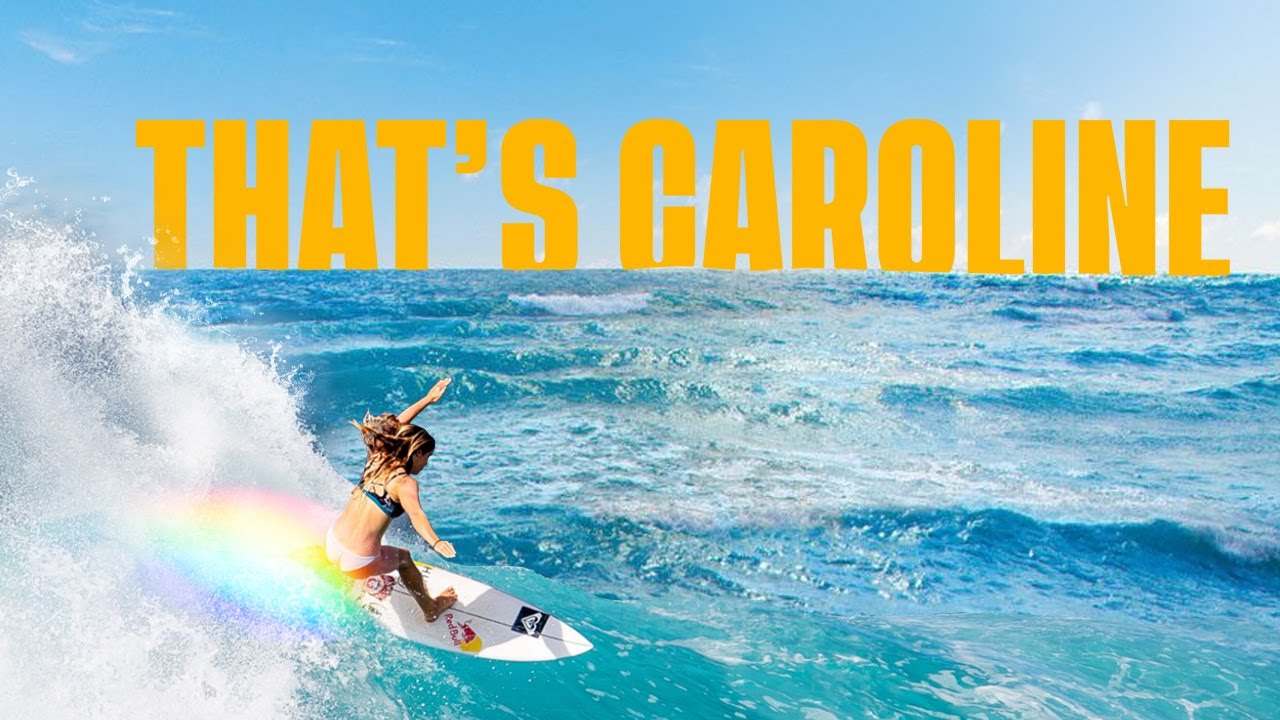
Here are a few small exercises for your personal warm-up:
To get going, you should run a short distance, even 100m there and back is enough.
To warm up your neck, turn your head to the left and right (8 repetitions each). Then tilt your head forwards and backwards and then make rotating movements with your head.
To prepare for paddling, circle your shoulders. First make large circles, then rotate your arms in smaller circles. You should also do about 8 repetitions in each direction.
You can swing your legs forwards and backwards, or simply do a few squats and squat down a little to warm up your knees and turn your knees first to the left and then to the right.
You should also rotate your ankles in both directions. Then rotate your hips again in both directions and stretch your neck, shoulders and arms, as well as your legs, ankles and back.
This warm-up takes about 10-15 minutes of your time. You should definitely invest this time as it will allow you to react more quickly on your board and prevent some injuries. You can find a great 5-minute warm-up here.

Here are a few tips for learning to surf & surf theory
Information about learning to surf
Surfing tips for beginners and intermediate surfers. Here you will find information that will help you learn this wonderful sport. Click in and read up on it.
Surf theory All about surfing
Theory & history of surfing and surfing. Here you will find background knowledge about surfing. Immerse yourself in history and learn new things about the sport of kings.



